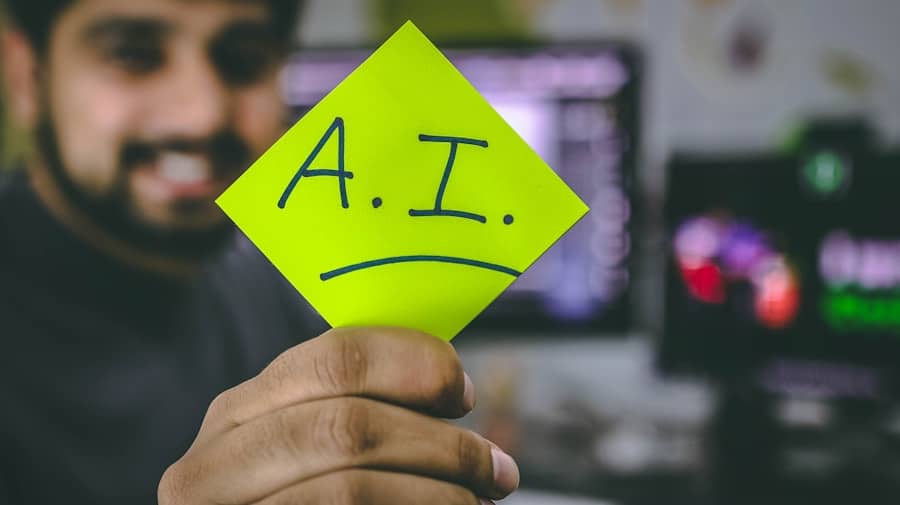The integration of artificial intelligence (AI) into employee performance evaluation represents a significant shift in how organizations assess and manage their workforce. Traditionally, performance evaluations have relied heavily on subjective assessments, often influenced by personal biases and inconsistent criteria. However, the advent of AI technologies has introduced a more data-driven approach, enabling organizations to analyze employee performance through objective metrics and predictive analytics.
This transformation is not merely a trend; it reflects a broader movement towards leveraging technology to enhance decision-making processes within human resources. AI systems can process vast amounts of data, identifying patterns and trends that may not be immediately apparent to human evaluators. By utilizing machine learning algorithms, organizations can gain insights into employee performance that are both comprehensive and nuanced.
This capability allows for a more holistic view of an employee’s contributions, taking into account various factors such as productivity, collaboration, and engagement. As companies increasingly adopt AI-driven performance evaluation tools, the implications for workforce management and organizational culture are profound, prompting a reevaluation of traditional HR practices.
Key Takeaways
- AI in employee performance evaluation can streamline the process and provide more accurate and unbiased results.
- Using AI in performance metrics can lead to improved decision-making, increased efficiency, and better employee development.
- AI can help eliminate bias in performance evaluations by focusing on objective data and reducing human subjectivity.
- Challenges and limitations of AI in employee performance evaluation include data privacy concerns, potential algorithmic bias, and the need for human oversight.
- The future of AI in predicting employee performance looks promising, with advancements in predictive analytics and machine learning algorithms.
The Benefits of Using AI in Employee Performance Metrics
One of the most significant advantages of employing AI in employee performance metrics is the ability to harness data analytics for more accurate assessments. AI systems can aggregate data from multiple sources, including project management tools, communication platforms, and employee feedback systems. This comprehensive data collection enables organizations to create a more detailed picture of an employee’s performance over time.
For instance, an AI tool might analyze an employee’s output in relation to their peers, providing insights into productivity levels that are grounded in actual performance rather than anecdotal evidence. Moreover, AI can facilitate real-time feedback mechanisms that enhance employee development. Traditional performance reviews often occur annually or biannually, which can lead to outdated evaluations that do not reflect an employee’s current capabilities or contributions.
In contrast, AI-driven systems can provide continuous feedback based on ongoing performance data.
For example, if an employee consistently meets deadlines but struggles with collaboration, AI tools can flag this issue and prompt targeted training or support.
The Role of AI in Eliminating Bias in Performance Evaluations

Bias in performance evaluations has long been a concern for organizations striving for fairness and equity in the workplace. Human evaluators may unconsciously allow personal biases—whether based on gender, race, or other factors—to influence their assessments. AI has the potential to mitigate these biases by relying on objective data rather than subjective opinions.
By standardizing the evaluation process through algorithms that focus on measurable outcomes, organizations can create a more equitable framework for assessing employee performance. For instance, AI systems can be programmed to ignore demographic information that could lead to biased evaluations. Instead, they can focus solely on performance-related metrics such as project completion rates, quality of work, and peer feedback.
This approach not only helps to level the playing field for all employees but also fosters a culture of meritocracy where individuals are recognized based on their contributions rather than personal characteristics. However, it is essential to ensure that the algorithms themselves are free from bias; otherwise, they could inadvertently perpetuate existing inequalities.
Challenges and Limitations of AI in Employee Performance Evaluation
Despite the numerous advantages of AI in employee performance evaluation, several challenges and limitations must be addressed. One significant concern is the quality of the data being used to train AI systems. If the input data is flawed or biased, the resulting evaluations will also be flawed.
For example, if an organization primarily collects performance data from high-performing teams while neglecting those with lower outputs, the AI may develop skewed benchmarks that do not accurately reflect overall employee performance. Additionally, there is the challenge of transparency in AI decision-making processes. Many AI algorithms operate as “black boxes,” making it difficult for HR professionals and employees to understand how evaluations are derived.
This lack of transparency can lead to mistrust among employees who may feel that their performance is being assessed by an inscrutable system. Organizations must prioritize explainability in their AI tools to ensure that employees understand how their evaluations are determined and can provide feedback on the process.
The Future of AI in Predicting Employee Performance
As AI technology continues to evolve, its potential for predicting employee performance will likely expand significantly.
By analyzing historical performance data alongside external factors such as market trends and economic conditions, AI can forecast future performance trajectories for individual employees or teams.
For example, an organization might use predictive analytics to identify employees who are at risk of underperforming based on patterns observed in their past behavior or engagement levels. By intervening early with targeted support or training programs, companies can help these employees improve their performance before issues escalate. Furthermore, predictive models can assist in succession planning by identifying individuals who possess the skills and attributes necessary for future leadership roles.
Ethical Considerations in Using AI for Employee Performance Evaluation

Privacy Concerns
One primary concern is the potential for privacy violations. Employees may feel uncomfortable knowing that their every action is being monitored and analyzed by AI systems.
Fairness and Bias
Organizations must ensure that AI systems are designed and implemented fairly. This includes conducting regular audits of algorithms to identify any biases that may emerge over time and ensuring that diverse perspectives are included in the development process.
Transparency and Trust
Organizations should establish clear guidelines regarding how performance data will be used and communicated to employees, fostering an environment of trust and transparency.
Implementing AI in Performance Management Systems
Successfully implementing AI in performance management systems requires careful planning and consideration of various factors. First and foremost, organizations must invest in high-quality data collection methods to ensure that the information fed into AI systems is accurate and relevant. This may involve integrating existing HR systems with new AI tools or adopting new technologies altogether.
Training HR professionals and employees on how to use these AI tools effectively is equally crucial. Employees should be educated about how their performance will be evaluated and how they can leverage feedback from AI systems to enhance their development. Additionally, organizations should establish clear communication channels for addressing any concerns or questions related to the use of AI in performance evaluations.
The Impact of AI on the Future of Human Resources
The integration of AI into employee performance evaluation is poised to reshape the landscape of human resources significantly. As organizations increasingly rely on data-driven insights for decision-making, HR professionals will need to adapt their skill sets accordingly. This shift may require HR teams to become more proficient in data analysis and technology management while also maintaining their focus on employee engagement and organizational culture.
Furthermore, as AI continues to evolve, it will likely lead to a redefinition of traditional HR roles. For instance, HR professionals may transition from being evaluators to becoming facilitators who guide employees through their development journeys using insights generated by AI systems. This evolution presents an opportunity for HR departments to play a more strategic role within organizations, focusing on talent development and organizational effectiveness rather than merely administrative functions.
In conclusion, while the integration of AI into employee performance evaluation presents numerous opportunities for enhancing organizational effectiveness and fairness, it also necessitates careful consideration of ethical implications and challenges associated with implementation. As technology continues to advance, organizations must remain vigilant in ensuring that their use of AI aligns with their values and promotes a positive workplace culture.
In a related article discussing the impact of technology in the workplace, How Smartwatches Are Revolutionizing the Workplace, the author explores the ways in which wearable technology, such as smartwatches, is transforming how employees work and interact with their environment. This article delves into the benefits of using smartwatches to track employee performance metrics and enhance productivity. As AI continues to play a crucial role in evaluating employee performance, the integration of smartwatches in the workplace is becoming increasingly important.
FAQs
What is AI?
AI, or artificial intelligence, refers to the simulation of human intelligence processes by machines, especially computer systems. These processes include learning, reasoning, and self-correction.
How is AI used in evaluating employee performance metrics?
AI can be used to analyze large amounts of data to identify patterns and trends in employee performance metrics. It can also be used to automate the process of evaluating performance by using algorithms to assess various factors such as productivity, quality of work, and adherence to company policies.
What are the benefits of using AI in evaluating employee performance metrics?
Using AI can lead to more objective and consistent evaluations of employee performance. It can also save time and resources by automating the evaluation process and providing insights that may not be readily apparent through traditional methods.
What are the potential drawbacks of using AI in evaluating employee performance metrics?
One potential drawback is the risk of bias in the algorithms used to evaluate performance, which could lead to unfair or inaccurate assessments. Additionally, there may be concerns about the privacy and security of the data used in the evaluation process.
How can companies ensure the ethical use of AI in evaluating employee performance metrics?
Companies can ensure the ethical use of AI by regularly auditing and testing the algorithms used for evaluating performance, being transparent with employees about the use of AI in performance evaluations, and providing avenues for employees to challenge or appeal their performance assessments.

